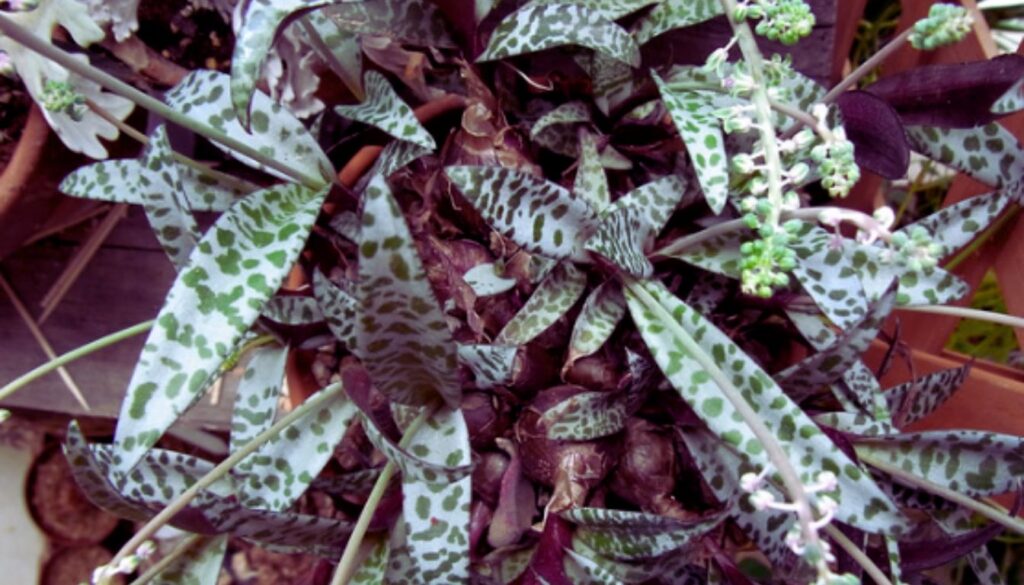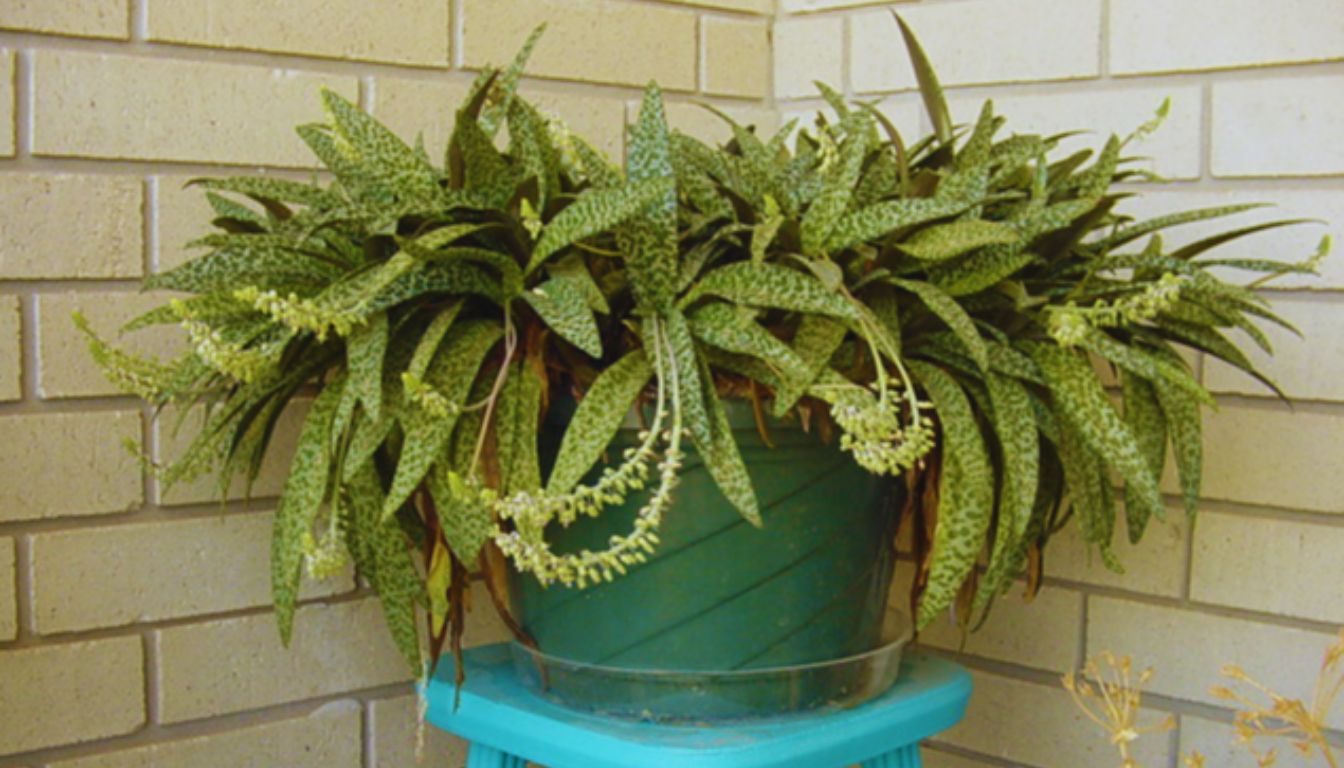If you’re looking to add a touch of elegance to your garden, ledebouria, or silver squill, is a stunning choice. These unique plants, with their striking silver foliage, not only stand out but also thrive with minimal care. Imagine a lush, low-maintenance addition that brings a burst of color and texture to your indoor or outdoor space.
Overview of Ledebouria – How to Grow Ledebouria (Silver Squill)
Ledebouria, commonly known as silver squill, shines as a charming plant choice. Its striking foliage and easy care routines attract gardeners everywhere.
Characteristics of Silver Squill Plants
Silver squill plants feature fleshy, gray-green leaves adorned with silvery spots. The leaves grow in clusters from the bulb, creating a lovely display. In spring, the plants produce delicate, bell-shaped flowers on slender stalks. These flowers bring a touch of elegance. The height of the plant typically ranges from 6 to 12 inches, making it perfect for both pots and garden beds.
Native Habitat and Distribution
Silver squill originates from South Africa, thriving in rocky, arid environments. It prefers well-drained soils and bright, indirect light. Its adaptable nature allows it to flourish in varied climates. In some regions, the plant grows wild among other succulents. Gardeners appreciate its resilience, as it tolerates periods of neglect.
Growing Ledebouria – How to Grow Ledebouria (Silver Squill)

Growing ledebouria, or silver squill, requires attention to a few key factors. Getting these right helps me create a thriving environment for the plant.
Choosing the Right Soil
Choosing the right soil is vital for silver squill. I prefer a well-draining mix that encourages healthy root development. A combination of sandy soil and potting mix works wonders. This combination mimics its natural habitat in rocky areas. If the soil retains too much moisture, I risk root rot. So, keeping it dry but not bone-dry is essential.
Optimal Light Conditions
Optimal light conditions play a significant role in the growth of my silver squill. Bright, indirect light suits ledebouria best. Placing it near a window with filtered sunlight provides the right balance. Too much direct sun can scorch those beautiful silver leaves. However, too little light results in weak, leggy growth. I’ve found a happy medium is the key to success.
Caring for Ledebouria – How to Grow Ledebouria (Silver Squill)
Caring for ledebouria, or silver squill, requires attention to its basic needs. This resilient plant thrives with proper care, making it a rewarding choice for any garden.
Fertilization Tips
I recommend fertilizing ledebouria during the growing season. Use a balanced, water-soluble fertilizer, diluted to half strength. Apply it once a month to support healthy growth. Avoid fertilizing in the winter months; it’s sort of like making a meal when your friend is hibernating. Just let it rest.
Pest and Disease Management – How to Grow Ledebouria (Silver Squill)
I find that ledebouria is not often bothered by pests. However, keep an eye out for mealybugs and aphids. If they show up, a simple solution is to wipe them off with a damp cloth or spray them off with water. For fungal issues, ensure proper air circulation and avoid overwatering. It’s like giving the plant a breath of fresh air.
Pruning and Maintenance
Pruning ledebouria is straightforward. I cut off any dead or yellowing leaves at the base to encourage new growth. This plant doesn’t require much maintenance, which is excellent for busy gardeners. Occasionally, check the soil for moisture. If it’s dry about an inch down, give it a drink. Just remember, ledebouria prefers to be a little thirsty rather than too soggy.
Common Issues and Solutions – How to Grow Ledebouria (Silver Squill)

Addressing common issues ensures thriving ledebouria. Recognizing symptoms early helps maintain plant health.
Overwatering Problems
Overwatering often leads to root rot. I check the soil’s moisture level regularly. If it feels soggy, I let it dry out completely before watering again. Yellowing leaves indicate too much water. I remove affected leaves and adjust my watering schedule. A good rule? Less is sometimes more. It’s better to err on the side of dryness with silver squill.
Light Deficiency Symptoms
Light deficiency shows as weak growth and leggy stems. I ensure my ledebouria gets bright, indirect light. If the plant leans towards a light source, it needs a better spot. Watch for dull, faded foliage; this signals insufficient light. I often rotate the pot to promote even growth. If it struggles, consider moving it closer to a window. A happy plant means a thriving garden.
Before You Go – How to Grow Ledebouria (Silver Squill)
Growing ledebouria has been a delightful experience for me. Its striking silver foliage and charming flowers make it a standout in any garden. I appreciate how low-maintenance it is while still providing visual interest throughout the seasons.
By following the care tips I’ve shared, I’ve seen my silver squill thrive in various conditions. Whether you’re a seasoned gardener or just starting out, ledebouria is a fantastic choice that adds beauty without requiring constant attention. Embracing this resilient plant can transform your space into a vibrant oasis. Give it a try and enjoy the rewards of your efforts. Don’t forget to add The Herb Prof to your favorites so you don’t miss out on future articles.
References – How to Grow Ledebouria (Silver Squill)
Little Herb Encyclopedia, by Jack Ritchason; N.D., Woodland Publishing Incorporated, 1995
The Ultimate Healing System, Course Manual, Copyright 1985, Don Lepore
Planetary Herbology, Michael Tierra, C.A., N.D., Lotus Press, 1988
Handbook of Medicinal Herbs, by James A. Duke, Pub. CRP Second Edition 2007
The Complete Medicinal Herbal, by Penelope Ody, Published by Dorling Kindersley
Check the Following Articles
Herbal Supplements for Skin Health and Anti-Aging Benefits
How to Build a DIY Pea Trellis for a Thriving Garden Harvest
Longevity Spinach: A Superfood for Health and Flavor
What Is Foliar Spray? The Secrets to Healthier Plants
Frequently Asked Questions – How to Grow Ledebouria (Silver Squill)
What is ledebouria or silver squill?
Ledebouria, commonly known as silver squill, is a flowering plant native to South Africa. It features unique gray-green foliage adorned with silvery spots, making it a beautiful addition to gardens. The plant blooms delicate, bell-shaped flowers in spring and thrives in well-drained, rocky soils.
How do I care for ledebouria?
To care for ledebouria, use a well-draining soil mix of sandy soil and potting mix. Provide bright, indirect light and fertilize with a balanced, diluted fertilizer during the growing season. Avoid overwatering and prune dead leaves to promote new growth.
What are the light requirements for silver squill?
Silver squill thrives in bright, indirect light. Direct sunlight can scorch its leaves, while inadequate light can lead to weak growth. Position the plant closer to a light source if you notice leggy stems or poor growth.
How often should I water ledebouria?
Water ledebouria when the soil is slightly dry to prevent root rot. It’s crucial to check soil moisture regularly and adjust your watering schedule accordingly. The plant prefers to be slightly drier rather than overly wet between waterings.
Is ledebouria pest-resistant?
Yes, ledebouria is generally pest-resistant. However, it’s wise to monitor for pests like mealybugs and aphids. If you notice any, simple removal methods—like wiping them off with a cloth—are usually effective in keeping the plant healthy.
What should I do if my ledebouria has root rot?
If you suspect root rot, check the soil moisture and ensure the plant isn’t being overwatered. Remove the plant from its pot, trim away any affected roots, and repot it in fresh, well-draining soil. Adjust your watering routine to prevent recurrence.
Can ledebouria grow indoors?
Yes, ledebouria can thrive indoors as long as it receives bright, indirect light. Make sure to provide well-draining soil and monitor watering to ensure the plant remains healthy and avoids root rot.
What are the common issues with silver squill?
Common issues with silver squill include overwatering, which leads to root rot, and insufficient light, causing weak growth. Regularly check the soil moisture and ensure the plant receives adequate light to address these problems efficiently.

